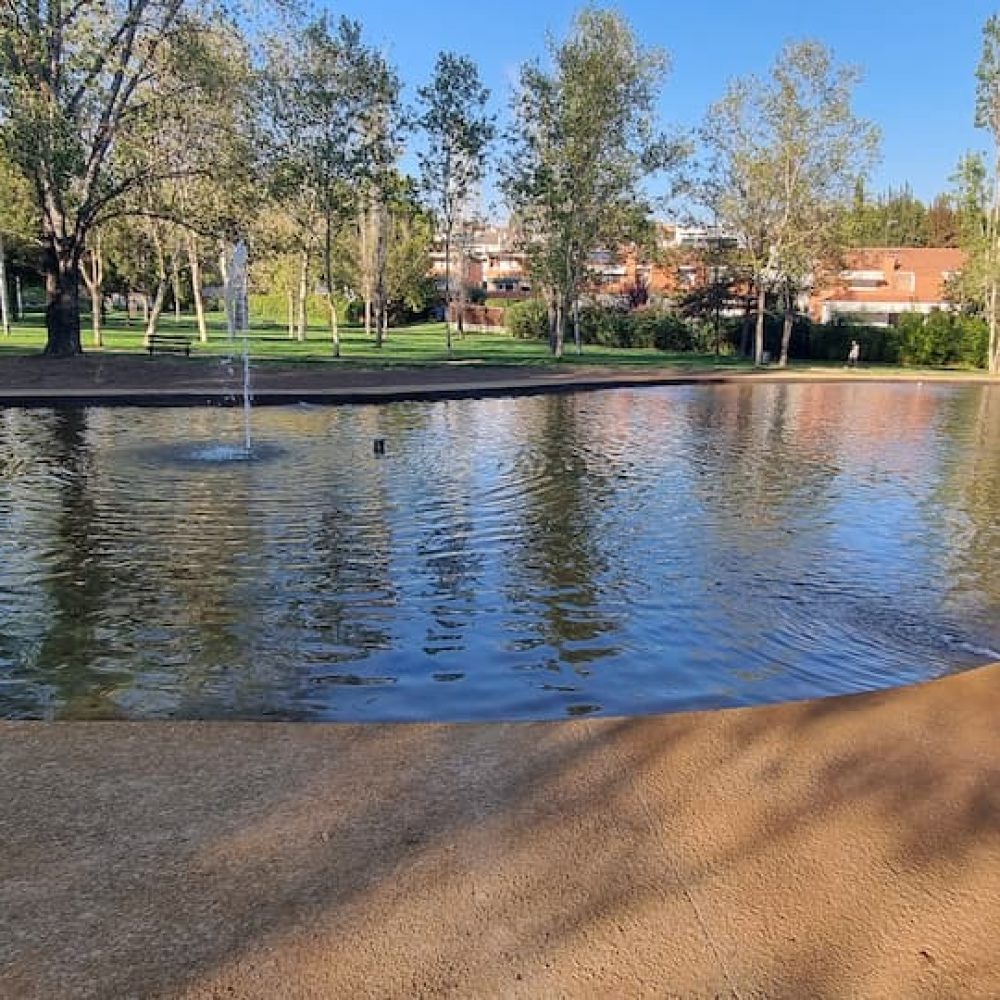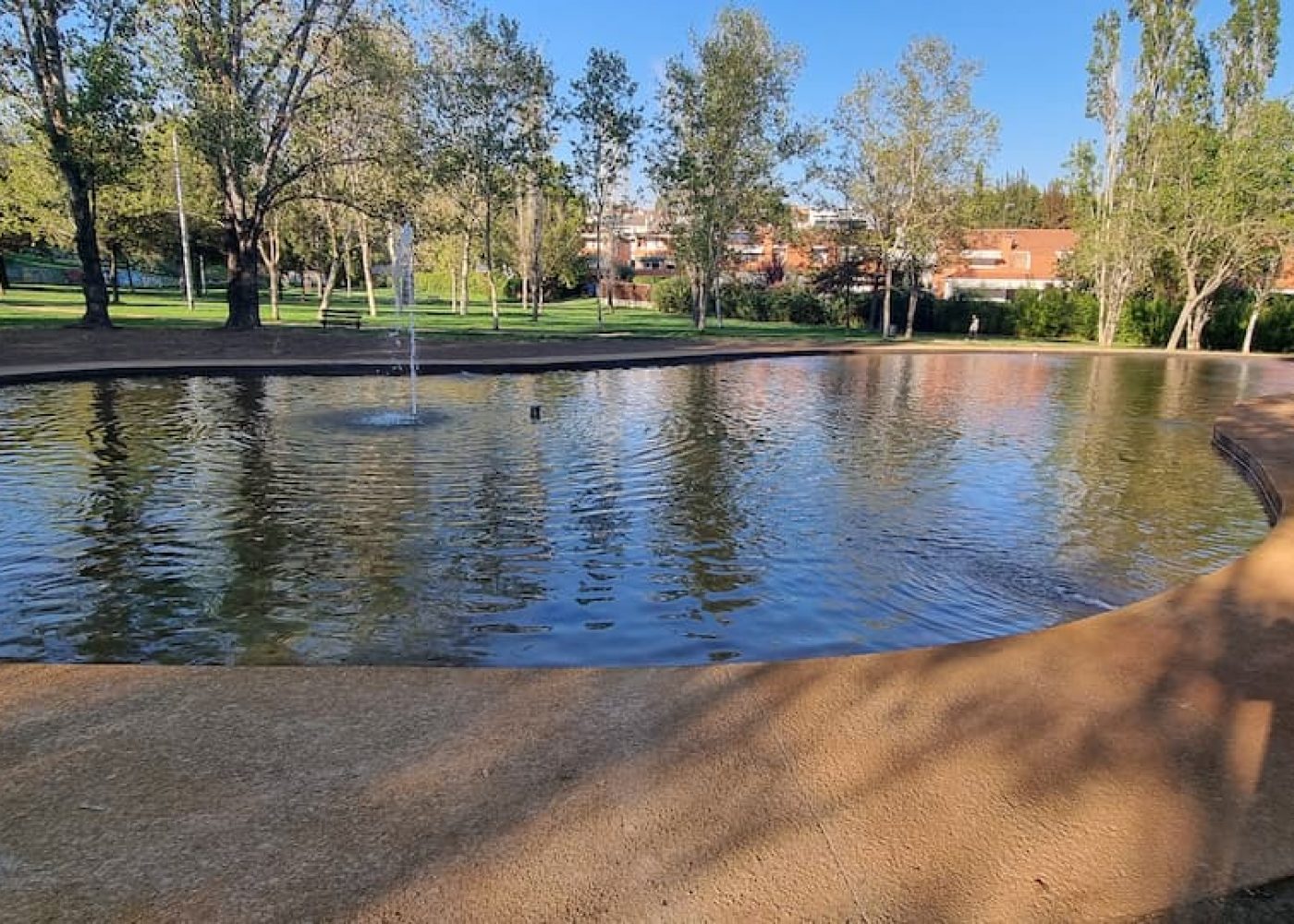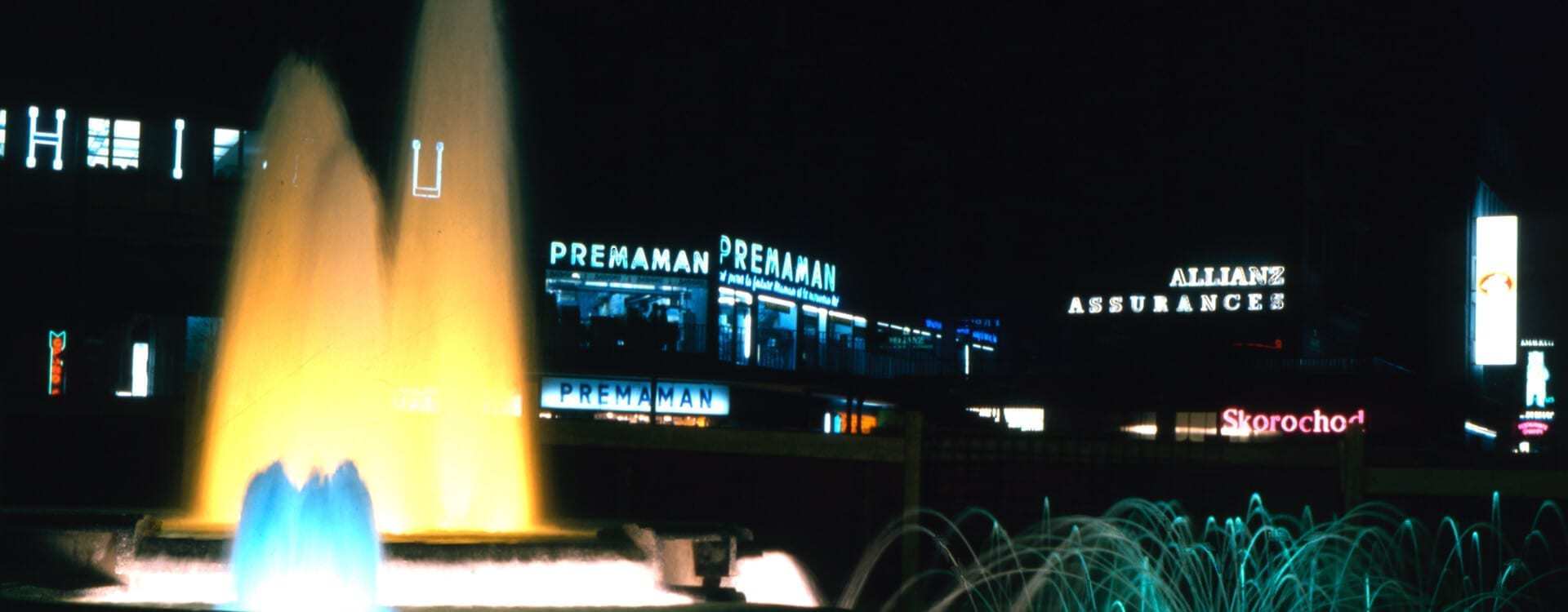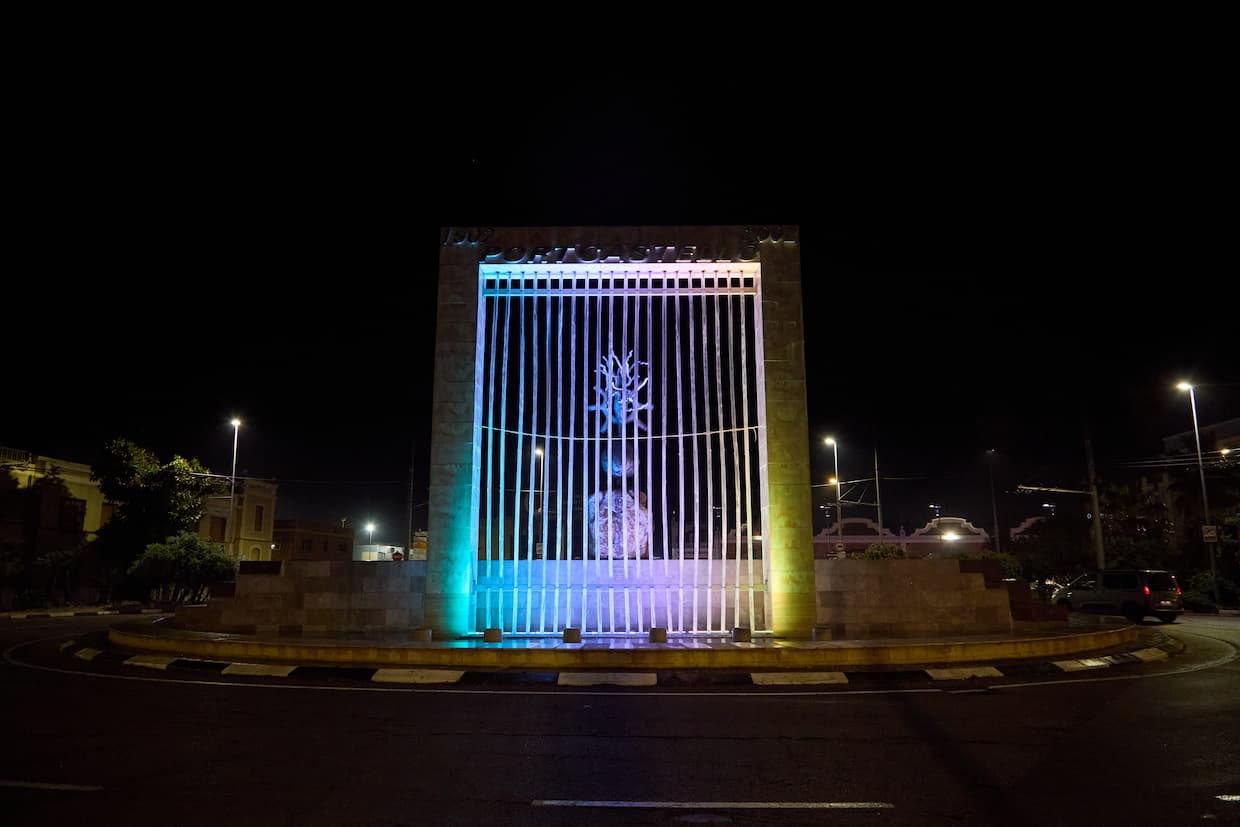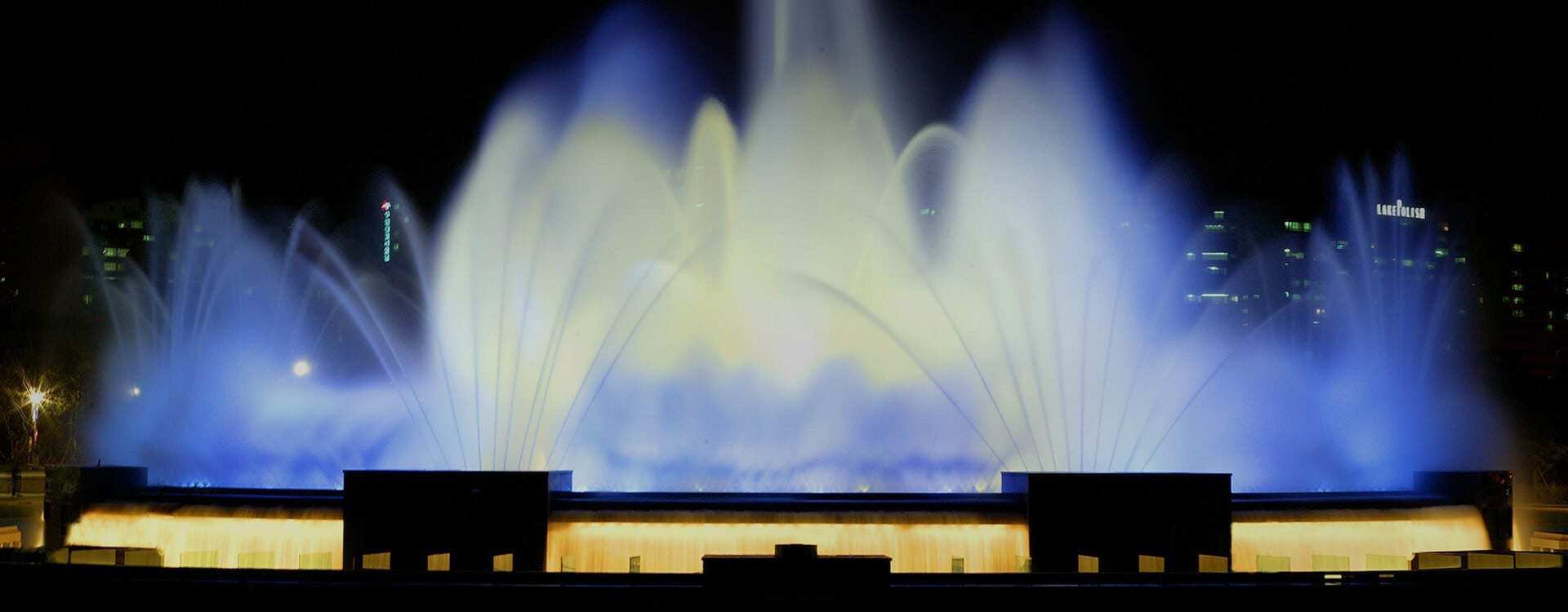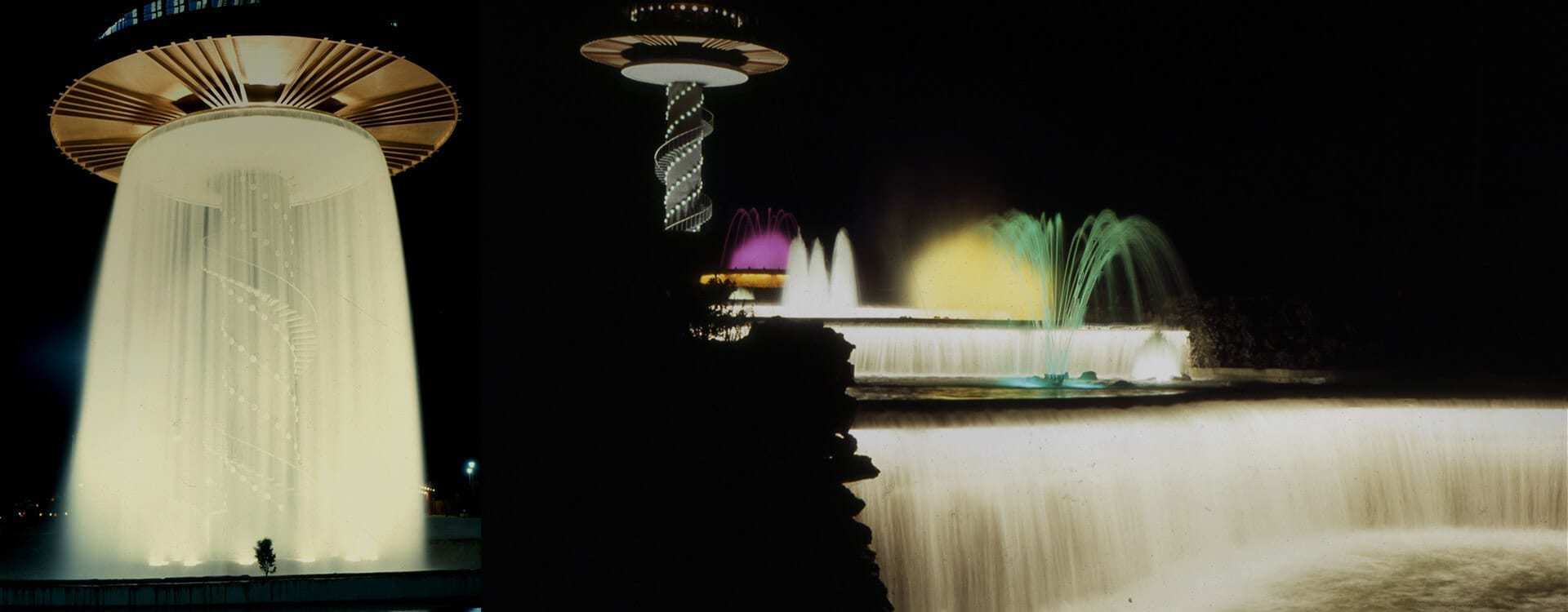Design
Due to the poor condition of the ancient pond, a complete renovation was necessary. The project carried out for the City Council proposed a new, more organic shape for the pond, integrated into the park, along with several improvements to the installation’s design that allowed a better water circulation in the pond and significant energy savings.
The pond was designed with corten steel finishes, providing elegance and modernity to the lake while defining its layout. Surrounding the lake, a concrete and corten steel walkway was designed for strolling.
Execution
The execution was carried out in three phases:
- The first phase involved civil engineering tasks. The previous structure was demolished to start laying out the new lake, and the existing installation was removed to level the terrain at the project’s elevation. Next, ground preparation was done, creating a 30cm-thick gravel bed, formwork with hollow brick for partial soil containment before spraying. In this phase, the corresponding installations were also embedded in the base of the pond, ready for the final aesthetic details. At the end of this phase, the pond was sprayed in a natural mocha color to achieve the defined slopes in the project.
- The second phase of the project focused on installing the equipment, including pipelines, drainage, and electrical wiring, as well as replacing the electrical panel with the current one. Special attention was given to the technical chamber’s position, housing most of the operating systems, and the arrangement of the pipes connecting this room to the lake.
- Finally, the fountain was connected and commissioned. Electrical connections for all equipment were made to the control panel, and the central fountain’s color sequence was programmed according to the specifications and preferences of Sant Quirze del Vallès City Council.
Sustainability
This project was developed in line with European sustainability principles, focusing on specific actions to reduce ecological impact and optimize the efficient use of resources. One of the key strategies was the integration and reuse of the pre-existing fountain space, emphasizing a commitment to sustainable practices.
OTB highlights the selection of durable, high-quality materials such as stainless steel for hydraulic components and the LED lighting system. These materials extend the installation’s lifespan and reduce maintenance and replacement frequency.
In terms of resource management, particular emphasis was placed on energy efficiency. For example, the implementation of low-power LED lights significantly reduces energy consumption, benefiting both the environment through reduced carbon emissions and long-term operating costs.
The water treatment and recirculation system of the project stands out for its contribution to sustainability. This system allows for water reuse, significantly reducing water consumption. Water refills are limited to what is strictly necessary to compensate for evaporation and perform essential maintenance while maintaining high water quality and safety standards

